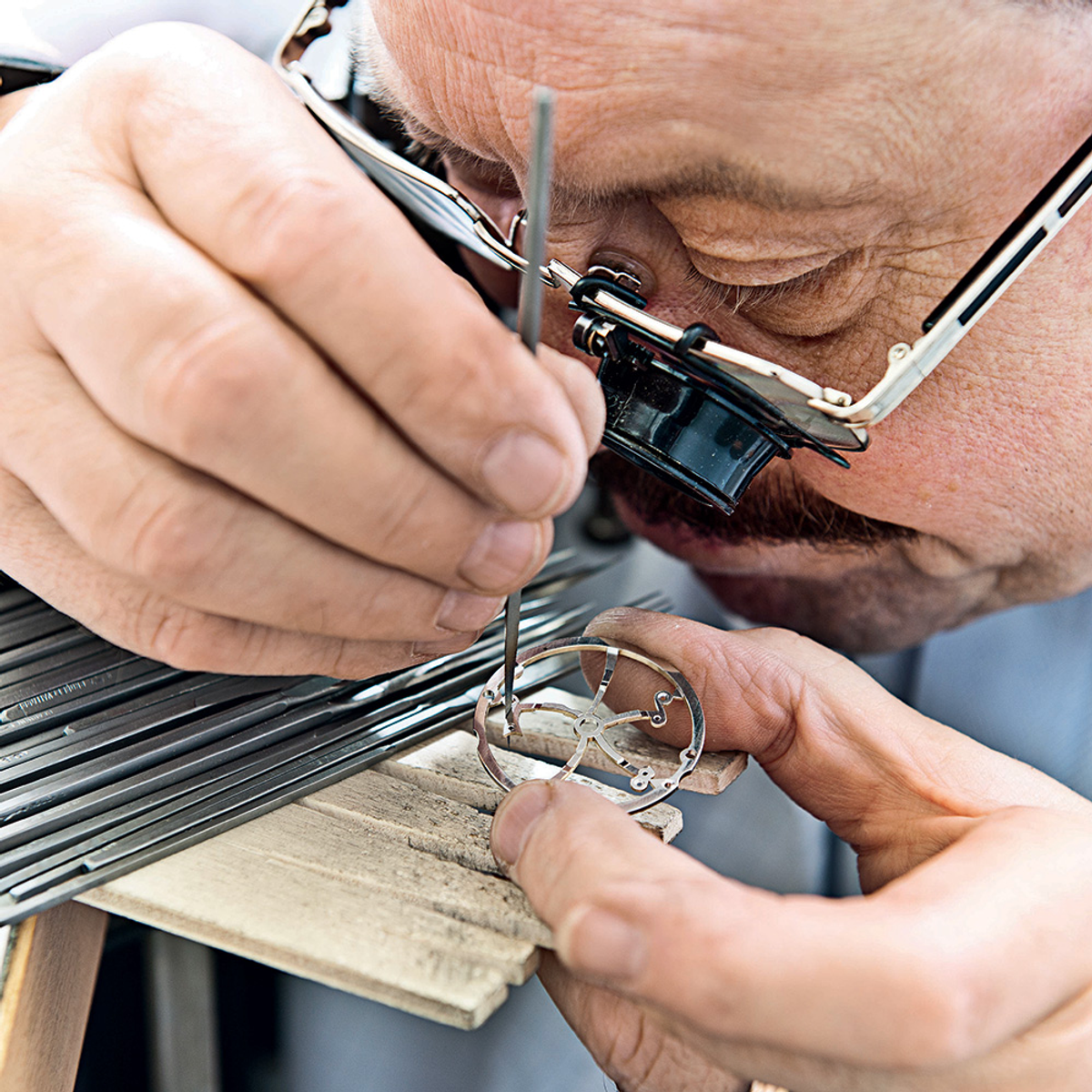Skeletonwork is the art of transparency. An art that makes the highest demands on the craftsman who must cut away the mechanical parts of a watch movement while ensuring it continues to function perfectly. Most often, this involves an existing solid calibre which is entirely "reconceptualised". Plate, bridges, barrel and other mechanical parts, previously drilled and cut-away, will occupy the craftsman's expert hands until a new face is revealed. Working with each component in turn, he then creates subtle contrasts between the polished finish of hand-chamfering that will catch the light, and the mat effect of hand-drawing that highlights radiance. After this chamfering and hand-drawing comes the engraving. The engraver meticulously incises and sculpts the metal to embellish the parts with original patterns. Each stroke of the burin requires the utmost precision, sometimes one-tenth of a millimetre, and great sensitivity to aesthetic. Indeed, skeletonisation has a purely aesthetic purpose yet no less implies an additional complexity compared with a solid calibre, at every stage in the process. For this reason, the craftsman must demonstrate both the talent and skill of the engraver, and the knowledge of a watchmaker.

